Attachment 4 – HC What MEPS tells us about…Charts
04-HC What MEPS tells us about...Charts.docx
Medical Expenditure Panel Survey Household Component and Medical Provider Component (MEPS-HC and MEPS-MPC)
Attachment 4 – HC What MEPS tells us about…Charts
OMB: 0935-0118

 What
MEPS tells us about . . . children
What
MEPS tells us about . . . children
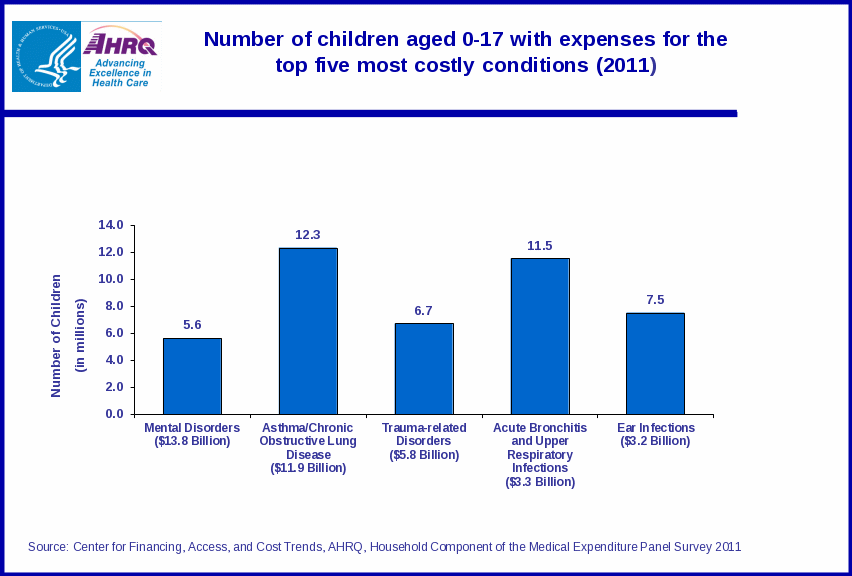
Of the five most costly conditions for children, mental disorders affect the fewest children but account for most of the spending.
The least expensive condition to treat for children is ear infections.
Almost 24 million children had some type of respiratory condition in 2011, and about half of those kids had Asthma or similar chronic respiratory condition.

 What
MEPS tells us about … children
What
MEPS tells us about … children
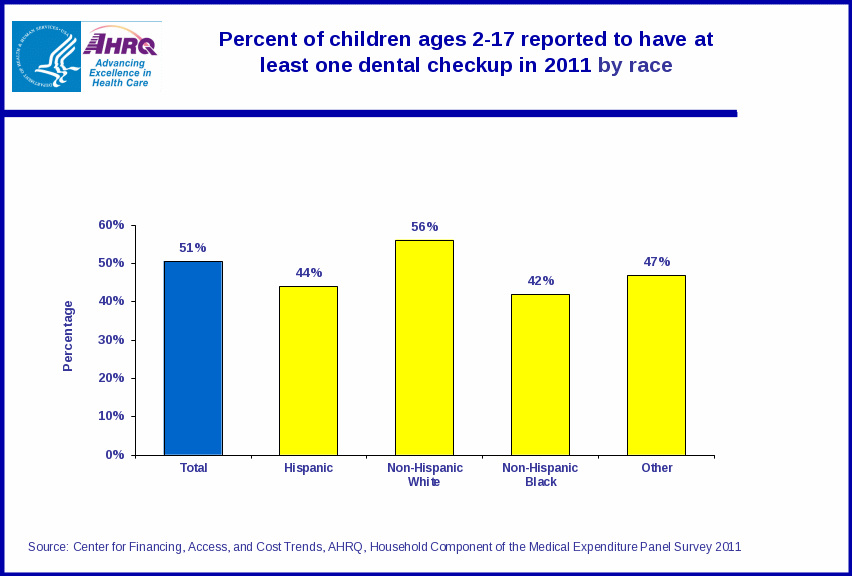
General guidelines suggest children 2 years old and older visit the dentist two times a year.
However, in 2011, only about half of all children in that age group had at least one dental checkup. Which means about half of 2 – 17 year old children did not have any dental check-ups in 2011.
In 2011, there was little variation by race or ethnicity in the percentage of children with at least one dental check-up.
A little less than half of Hispanic children and black children reported having at least one dental check-up in 2011.
A little over half of white, non-Hispanic children had at least one dental checkup in 2011.

 What
MEPS tells us about … young men
What
MEPS tells us about … young men
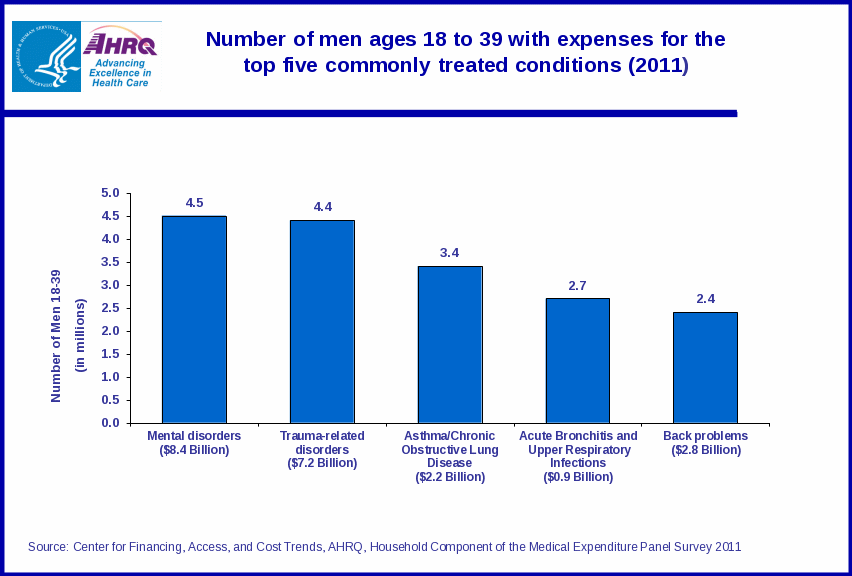
In 2011, slightly more men between 18 and 39 received treatment for mental conditions than trauma related disorders, such as injuries from car accidents or sports.
For men ages 18 to 39, it cost a little over 1 billion more dollars to treat mental disorders than trauma related disorders such as injuries from car accidents or sports.
In 2011, treating trauma-related disorders in men 18-39 years old cost more than treating asthma and bronchitis combined.

 What
MEPS tells us about … young women
What
MEPS tells us about … young women
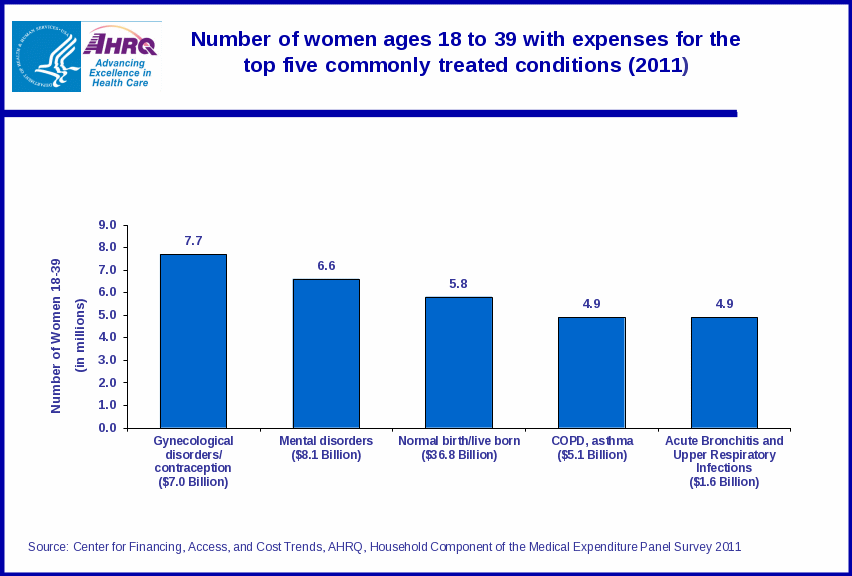
In 2011, more money was spent on care associated with child birth than other health care for women ages 18-39.
However, almost 2 million more women between the ages of 18-39 received gynecological care, including contraception, than women who gave birth.
In 2011, for women ages 18 to 39, giving birth cost nearly $29 billion more than care for mental disorders, the second most costly condition.

 What
MEPS tells us about … seniors
What
MEPS tells us about … seniors
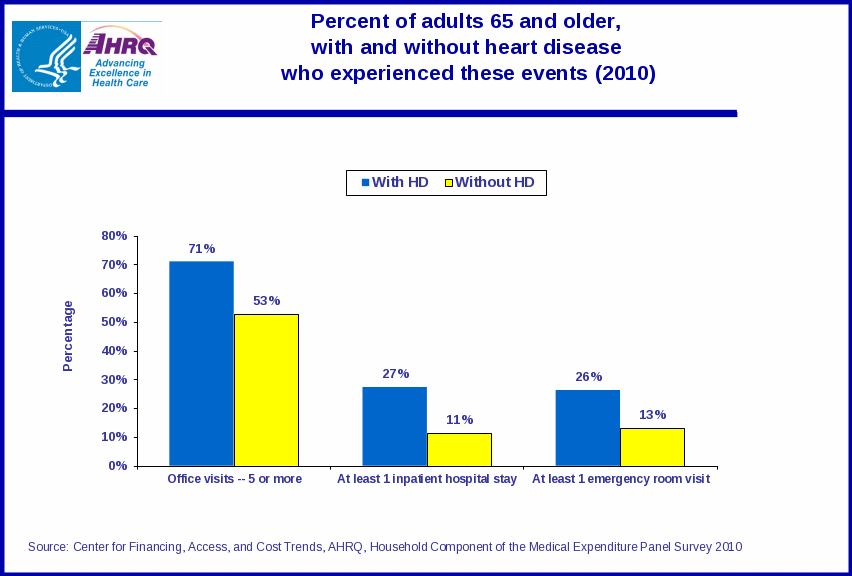
Over half of all adults 65 and older had 5 or more visits to a health provider office in 2010.
More than 2/3 of seniors with heart disease saw a health care provider 5 or more times in 2010.
In 2010, adults ages 65 or older with heart disease were two times more likely to have at least one emergency room visit than seniors without heart disease.
For adults ages 65 or older, having heart disease meant you were much more likely than those without heart disease to have a large number of office visits, inpatient hospital stays and emergency room visits.

 What
MEPS tells us about … chronic conditions
What
MEPS tells us about … chronic conditions

Over half of all money spent on health care for adults is for treating chronic conditions (55%) such as diabetes or asthma.
80% of all money spent on prescription medicines was for treating chronic conditions.
A little more than 3/4 of all money spent on home health care was for treating chronic conditions.
Less than 1/3 of all money spent on emergency room visits is associated with treating chronic conditions.

 What
MEPS tells us about … chronic conditions
What
MEPS tells us about … chronic conditions
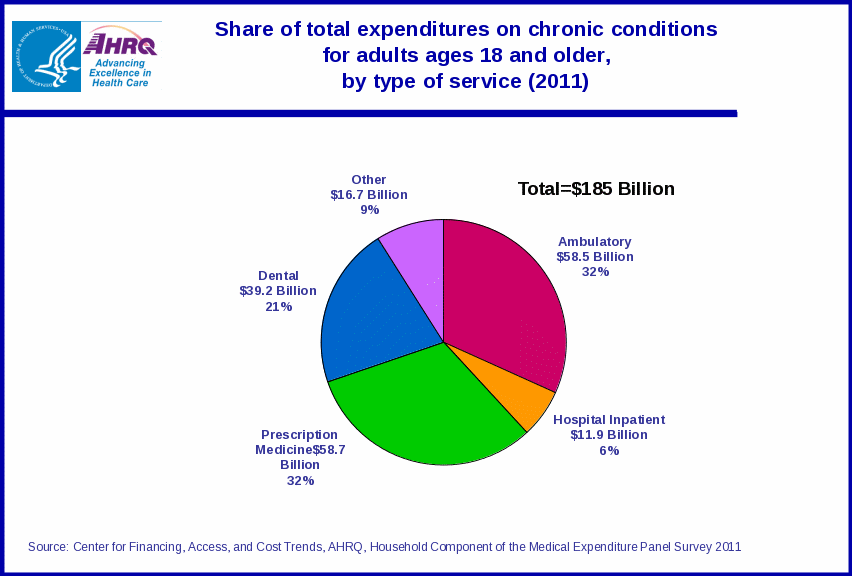
Together ambulatory care (care received other than as a hospital stay) and prescription medicine make up nearly two thirds of all money spent for treating chronic conditions for adults ages 18 or older.
In 2011, for adults with chronic conditions, about 27 billion more dollars were spent on dental care than hospital inpatient stays.
Only 6% of expenditures on adults with chronic conditions are for inpatient hospital stays.

 What
MEPS tells us about … usual care
What
MEPS tells us about … usual care
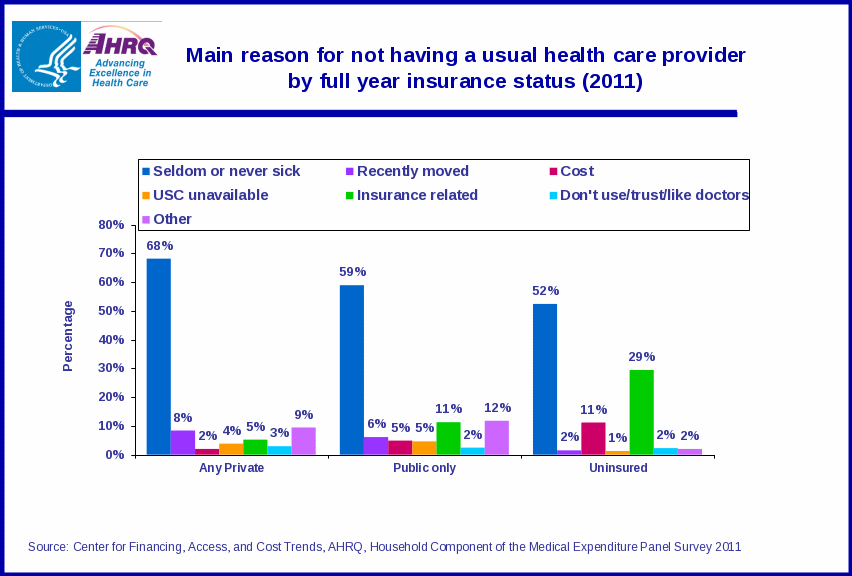
Most people who do not have a usual health care provider say it is because they seldom or rarely get sick, regardless of their insurance status.
Among the uninsured, cost is another reason for not having a usual health care provider.
14-714R.
| File Type | application/vnd.openxmlformats-officedocument.wordprocessingml.document |
| Author | Andrew Mercer |
| File Modified | 0000-00-00 |
| File Created | 2021-01-13 |
© 2025 OMB.report | Privacy Policy